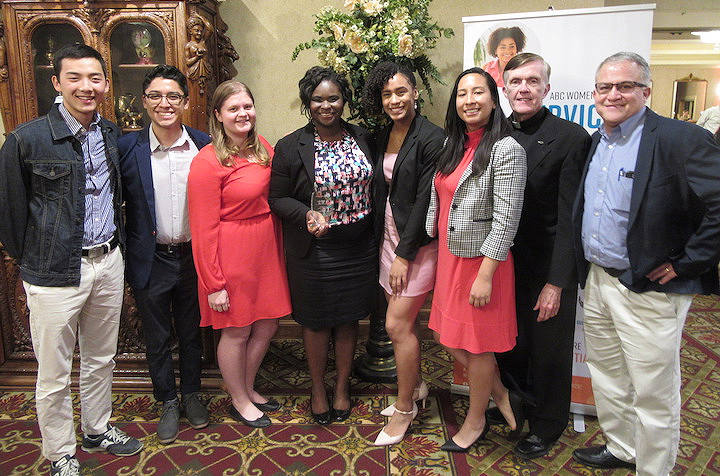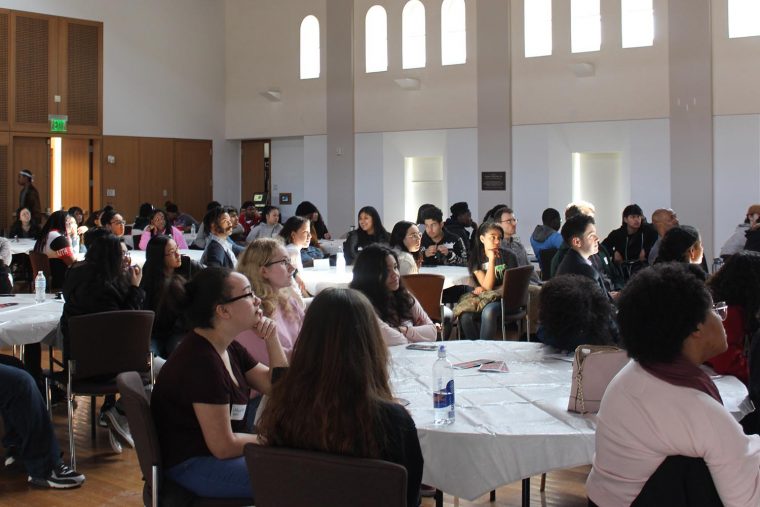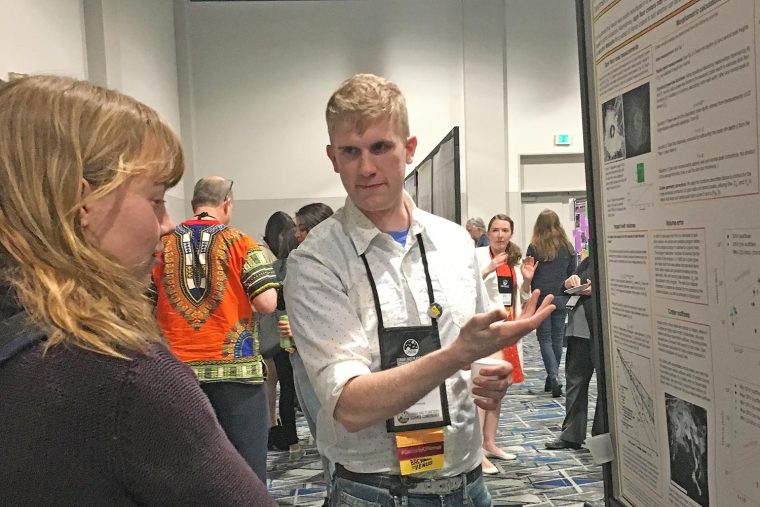This year, approximately 740 teams from more than 350 universities across the country competed in tournaments hosted by the American Mock Trial Association (AMTA). And of those 740 teams, Wesleyan's Mock Trial Team A placed eighth in the country in the Temple Law Division during the National Championship Tournament on April 7. The AMTA hosted three rounds of competition for the 5,300 participating college students: Regionals, the Opening Round Championship Series (ORCS), and the National Championship. Wesleyan's three teams—A, B, and C—qualified for the ORCS tournament leading up to Nationals. And for the first time in Wesleyan's history, teams A and B…
Lizzie Whitney ’19, a College of Letters and German studies double major from California, is the recipient of a 2019 DAAD scholarship for study/research in Germany. The Deutscher Akademischer Austauschdienst, or German Academic Exchange Service (DAAD) supports the internationalization of German universities and promotes German studies and the German language abroad. The study scholarship is presented to graduating seniors at the top of their class. Whitney, who is applying to the University of Konstanz for graduate school, will use her DAAD scholarship to support her studies in comparative literature. The study scholarship also provides students with a monthly stipend plus funds for…
Ten Wesleyan seniors and recent alumni are the recipients of 2019-20 Fulbright English Teaching Assistantships (ETA) and Fulbright Open Study/Research Awards. The English Teaching Assistant (ETA) Programs place Fulbrighters in classrooms abroad to provide assistance to local English teachers. ETAs help teach English language while serving as cultural ambassadors for the U.S. The age and academic level of the students varies by country, ranging from kindergarten to university level. Applicants for Open Study/Research Awards design their own projects and will typically work with advisors at foreign universities or other institutes of higher education. The study/research awards are available in approximately…
In this recurring feature in The Wesleyan Connection, we highlight some of the latest news stories about Wesleyan and our alumni. Wesleyan in the News 1. The Middletown Press: "Wesleyan Students Helping Former Prisoners to Gain Job Skills" Wesleyan Students for Ending Mass Incarceration (SEMI) is a group of students working to help formerly incarcerated individuals acclimate back into society by providing them with job skills. The goal, according to member Asiyah Herrero '22, is “making re-entry into the workforce a little bit easier. There are usually a lack of resources when people get out of prison, and starting to look for work,…
Molecular biology and biochemistry graduate student Brandon Case and Professor Manju Hingorani are coauthors of a study published in Nucleic Acids Research in March 2019. The paper, titled “The ATPase mechanism of UvrA2 reveals the distinct roles of proximal and distal ATPase sites in nucleotide excision repair,” reports new findings on how the UvrA2 protein uses its ATPase activity to probe DNA for damage lesions, such as those caused by UV radiation, and initiate nucleotide excision repair (NER). This DNA repair process corrects tens of thousands of lesions introduced daily into the human genome by UV rays and chemical agents. (more…)
On April 4, students from Wesleyan for Women and Children (WesWAC) attended a fundraiser dinner banquet for ABC Women’s Center at St. Clement’s Castle in Portland, Conn. They were accompanied by University Roman Catholic Chaplain Father Bill Wallace, Adjunct Professor of Spanish Octavio Flores-Cuadra, and several members of the community. ABC Women’s Center provides free and confidential pregnancy resources and services to women and families in the greater Middletown area. Since the nonprofit doesn't receive federal funding, all services are supported by individual contributions, donations, and fundraisers. The banquet's theme was Strong As She. Proceeds will help ABC with its new initiatives such as…
On April 3, the women's lacrosse team defeated Amherst College, clinching a Little Three Championship outright with a thrilling 11-10 win. Little Three Championships are declared when a varsity team from Wesleyan, Williams, and Amherst defeats the other two rivals. The fierce competition among the schools dates back to at least 1910. Sydney Prokupek '21 scored the game-winning goal just seconds into overtime. In addition to the Little Three title, junior Abby Manning '20 also reached another milestone as she became the fourth player in program history to score 100 career goals. Wesleyan has now won two Little Three titles outright in the past three…
Two Wesleyan seniors will spend a year abroad working on purposeful international discoveries as 2019 Thomas J. Watson Fellows. Momi Afelin '19 and Justin Kim '19 are among 41 students from 40 partner institutions across the country to receive the prestigious fellowship. The Watson Fellowship is a rare window after college and pre-career for students to engage their deepest interests on a global scale. Fellows conceive original projects, execute them outside of the United States, and gain personal insight, perspective, and confidence. Afelin, a biology and neuroscience and behavior double major, will spend her fellowship year working on a project titled "Island Innovation:…
Wesleyan students and staff traveled to Johnsonburg, N.J., March 18-22 to participate in the fourth annual Office of Religious and Spiritual Life Interfaith Service Trip. The group had representation from the Protestant, Catholic, and Muslim communities. The student participants included Nacala Gadsden '21, Joy Adedokun '19, Fitzroy Pablo Wickham '21, Brynn Assignon '20, and Fatima Sepulveda '21. The trip was led by University Chaplain Rev. Tracy Mehr-Muska and Sandy Durosier '13, area coordinator for residential life. "The purpose of the trip was to engage in community service and learn about other faiths," Mehr-Muska said. The group stayed at the faith-based Johnsonburg Camp…
Two Wesleyan students were inducted into the 2019 American Society for Biochemistry and Molecular Biology (ASBMB) Honor Society in March. They are among only 33 students from around the country who were eligible to join the society this year. The inductees, Mackenzie Mitchell '20 and Edelina (Lina) Marzouk '19 are both majoring in molecular biology and biochemistry and the Science in Society Program. They are both members of the ASBMB Student Chapters, have a GPA of over 3.4 on a 4.0 scale, and have demonstrated exceptional achievement in academics, undergraduate research, and science outreach. The students were recognized by the Molecular Biology &…
Several Wesleyan students, faculty, and alumni attended the 50th Lunar and Planetary Science Conference (LPSC) March 18-22 in The Woodlands, Texas. Members of the Wesleyan Planetary Sciences Group presented their research on a range of planetary bodies. This annual conference brings together international specialists in petrology, geochemistry, geophysics, geology, and astronomy to present the latest results of research in planetary science. Earth and environmental studies major Emmy Hughes '20 presented a poster titled “Observations of Transverse Aeolian Ridges in Digital Terrain Models" during a session on “Planetary Aeolian Processes.” Earth and environmental science graduate student Reid Perkins MA '19 presented a…













